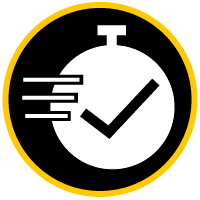
Create Artifacts of Your Research and Experiences
Purpose: Scholars will learn about various platforms where they can advertise their research findings and research skills.

Being Your Own Public Relations Specialist
Continue the good work in research. You are gaining invaluable skills. As you progress in your research career think about how you will promote your findings and skillsets. Professionals are increasingly required to act as their own public relations specialists- marketing their skills and scholarship through various channels. Consider that most job vacancies are filled through networking and personal referrals.
To network, you must advertise yourself. There exist multiple platforms to create compelling professional and scholarly identities that enhance their visibility and impact through broader dissemination. Through it, you can promote their experiences and education to potential employers and prospective universities. Below is a video from Knights of Distinction about advice on how to market your greatest assets and skills through an ePortfolio.
This may seem overwhelming, but there is great news! There are many ways to promote yourself in different ways:
- Get Published
- Create An Online Portfolio
- Present At A Conference
- Create A Digital Story

Creating Your Academic Portfolio
In this video, learn which artifacts can be included in an e-portfolio. Learn how to build an ePortfolio and prepare materials for your graduate school application(s).
Throughout this lesson, there will be more information on how to create your own online academic portfolio. However, the first step is to create artifacts and organize the information you do have and figure out what you need to still create. For more information about creating your academic portfolio, refer to a topic further in the Mastering – Part II Reflect and Create an Online Portfolio.

Choosing Your Content
Priscilla Louis, an AAP Scholar and Biomedical Sciences and Psychology double major, describes how to create and design your academic ePortfolio to prepare for graduate school. In this video, she dives into how to choose content to showcase on an ePortfolio.

Examples of Artifacts for Online Academic Portfolios

Your CV/Resume
Review the video below from UCF’s Career Services about what a CV is and the parts of a CV. Not every grad application will require a Curriculum Vitae (CV). Some applications will require a resume instead.

Lab Report or Project
Choose examples that show an iterative process of giving and receiving feedback. Be sure to choose the projects that are most relevant to the graduate programs that interest you.

Proof of a Publication
Getting your research published during your undergraduate career is a great way to set yourself ahead of the curve. It demonstrates that you know the necessary steps to make an idea into a viable research project and disperse created knowledge.
Start making plans early on. Get involved in research projects and let your principal investigators know that you want to get published. Collaborate with your principal investigator to achieve this goal. They can best tell you the steps you need to take and the best journals to feature your research findings.
There also exist journals that cater specifically to undergraduate researchers. The Pegasus Review: UCF’s Undergraduate Research Journal is one of those journals.

Official Website Featuring You
If you have had an official educational, institutional, news outlet write about your experiences and post it online, then link it on your academic portfolio. It shows that you have been noticed by others in your field around you.


Present at a Conference
Conferences are a great way to advertise your research and meet new people that will help you expand your network. Ask for a friend to take a photo of you presenting so that you can add this to your academic portfolio.
For more information refer to module 2F. Build Your Network Through Conferences and Professional Organizations.


Create a Digital Story
Also, known as digital documentaries, digital stories focus on a specific topic. They are made of computer-based images, text, recorded audio and music. They last anywhere from 2-10 minutes. This a great way to advertise your research to specialist and non-specialist audiences. For more information click here, this site is sponsored by the University of Houston.
Review Lianne Brito’s digital story, “The Road to Graduate School” below. Lianne is an alum from UCF with a Civil Engineering bachelor’s degree and a current graduate student at the University of Colorado, Boulder working towards her doctorate degree.

Suggested Assignment
Assignment #26
Create Artifacts for your Academic Portfolio
Purpose: Scholars will create a list of online platforms they will create and outline the materials they will need to gather to construct them. For assistance schedule a visit with AAP Peer Advisors.
Instructions: Plan for an Informational Interview; 4d_activity_three
Instructions for navigation
Prepare for graduate school now by marking this topic complete: click the “Mark Complete” button below in the bottom left hand corner to keep track of the topics you’ve completed. Then, click the “Next Topic” button below in the bottom right hand corner to move onto the next topic within the lesson.
If you are following the application elements curriculum, follow the Quick Learn icon to the right to the next topic in Resume/CV.
Note: For a refresher, consult the topic Actively Engage in Undergraduate Research and/or Experiential Learning


